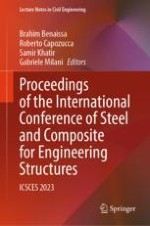This volume provides the latest developments in the field of steel and composite for engineering applications, as presented at the International Conference on Steel and Composite for Engineering Structures (ICSCES), held in Lecce, Italy on November 20-21, 2023. It covers interest topics like control and vibration, damage in composite materials, fracture and damage mechanics, construction management, damage tolerance, safety, security, and reliability, big data analytics, topology optimization and artificial intelligence, mechanical and material engineering, structural health monitoring, computer-aided design and manufacturing, crack initiation and propagation, performance and optimization, computational fracture mechanics, inverse problem, non-destructive testing, signal processing, artificial intelligence. It serves as a reference work for professionals and students in the areas of civil engineering, applied natural sciences and engineering management.
